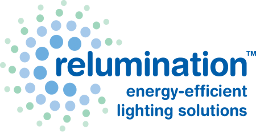LEDs, or light-emitting diodes as they’re called on your invoice, are small, energy-efficient lights that have been subtly changing illumination. Tougher, longer-lasting, and less expensive than traditional bulbs and lighting assemblies, LED lights are a definite part of a clean energy lighting solution.
Use Less, Get More
One of the main reasons that LED lights are being used as part of a green energy approach is their efficiency. They only use 2-17 watts of power according to this source, which means they use 1/3 to 1/30th the amount of power that other lighting displays need. LED lights create no excess heat, and the light they generate is bright and focused. Not only that but LED lights can last up to ten times as long as compact fluorescent lights do, and significantly longer than traditional incandescent lights. There’s no filament in an LED bulb either, which means they survive bouncing, sudden moves, and other situations that would completely break incandescent bulbs.
LEDs Are Recyclable Too
In addition to all of their other benefits LED bulbs can be recycled. Up to 95 percent of an LED is recyclable according to this source, and they contain almost no harmful materials. All you have to do is replace the old bulb with a new one, and then hand it over to be remade into something else. It really is that simple.
Will LEDs Make Clean Energy More Attainable?
Because LEDs use less energy and last longer than traditional bulbs (both of which are good for the environment and for the energy grid) they make it more feasible for renewable energy to fulfill a business’s lighting needs. Whether it’s solar panels on the roof or a wind mill in the parking lot the less power your lights require to shine brightly the easier it will be to generate that power locally rather than buying it from the power company.
